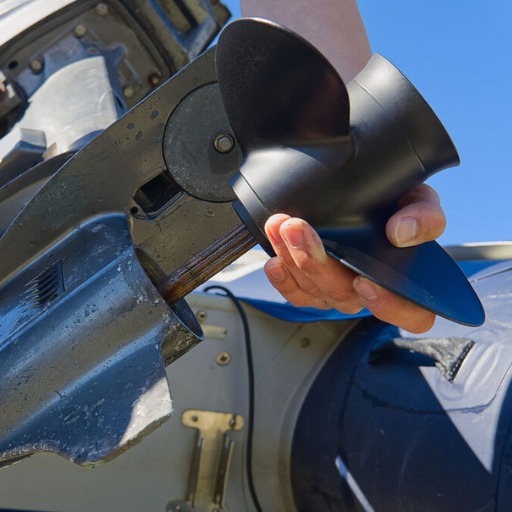Proper functioning of a boat’s propeller is essential for efficient and safe operation on the water. When issues arise, identifying the root cause and deciding on the right action can be challenging for boat owners. Propellers are subjected to various stresses such as impacts, corrosion, and wear, which can degrade their performance over time. We will explore how to troubleshoot common propeller problems and why opting for a Solas replacement propeller can be a reliable solution for many boaters. Understanding when a propeller requires repair versus replacement is crucial to maintaining your vessel’s performance and longevity.
Common Propeller Problems and Troubleshooting Techniques
Propeller issues often manifest as vibrations, reduced speed, poor fuel efficiency, or handling difficulties. One of the first signs of trouble is an unusual vibration that can be felt throughout the boat. This indicates that the propeller blades are bent, chipped, or out of balance. Visually inspecting the blades for damage or distortion is a fundamental troubleshooting step. If the blades appear warped or damaged, continuing to operate the vessel can worsen the problem and potentially harm other components like the driveshaft or gearbox. Another frequent issue is cavitation, where air bubbles form around the propeller blades, causing a loss of thrust and erratic performance.
Cavitation often results from an improperly sized propeller or damaged blades, requiring a replacement that matches the vessel’s specific power and speed requirements. Just as thorough diagnostics are crucial in identifying and treating conditions at OBGYN Specialists of Columbus, careful evaluation of propeller issues is essential for maintaining peak performance and avoiding more extensive mechanical failures.
Additionally, corrosion is a common enemy of propellers, especially for boats operating in saltwater environments. Corroded blades lose their smooth surface, leading to inefficient water flow and reduced propulsion. Regular inspection and maintenance can help detect early signs of corrosion, but repair may not be viable once corrosion progresses significantly. In these cases, replacing the propeller ensures the boat operates safely and efficiently. Propeller shaft alignment should also be checked during troubleshooting, as misalignment can mimic propeller issues by causing vibrations or noise. Ensuring the shaft is properly aligned can sometimes resolve performance problems without needing a new propeller. However, when damage is extensive, replacement becomes the most practical solution.
When to Choose Solas for Propeller Replacement
Selecting a replacement propeller requires consideration of durability, design, and performance characteristics. Solas propellers have earned a reputation for reliable manufacturing and consistent performance in various marine conditions. One of the main advantages of Solas propellers is their use of high-quality materials and precision engineering, which results in longer-lasting products that maintain efficiency over time. For boat owners facing persistent issues like blade damage or performance loss due to wear, choosing Solas for replacement can restore optimal operation.
Solas propellers are designed with hydrodynamics in mind, providing smooth water flow and minimizing cavitation risks. When a propeller replacement is necessary, matching the blade pitch and diameter to the boat’s engine and hull specifications is critical. Solas offers a wide range of propellers tailored to various vessel types and power outputs, making it easier to find the right fit. Additionally, the company’s attention to detail in blade shape and surface finish contributes to improved fuel efficiency and reduced vibration compared to generic replacements.
In cases where the existing propeller has suffered damage from impacts with underwater obstacles or debris, Solas propellers provide enhanced strength and resistance to deformation. This resilience helps prevent recurring issues, saving owners time and money on repeated repairs or replacements. Moreover, Solas propellers are compatible with many outboard, sterndrive, and inboard engines, which adds convenience for boaters seeking a straightforward replacement without extensive modification. Many dealers and marine service providers recommend Solas as a dependable option known for performance and durability for those uncertain about which propeller suits their needs.
Replacing a propeller with a Solas model can improve boat handling and responsiveness. Because the propeller is critical in how a vessel accelerates, turns, and maintains speed, investing in a quality replacement directly impacts the boating experience. Users often report smoother rides and better control after switching to a Solas propeller, particularly when the original was damaged or worn out. These improvements enhance enjoyment and contribute to safety by providing more predictable vessel behavior in various water conditions.
Addressing propeller problems promptly and effectively is essential to preserving a boat’s performance and safety. Identifying symptoms such as vibration, cavitation, corrosion, or blade damage guides boat owners in deciding whether to repair or replace their propeller. When replacement becomes necessary, choosing a propeller that combines durability, precision engineering, and performance is important. Solas propellers are a solid choice, offering various options designed to match diverse vessels and engine types. By selecting a Solas replacement, boaters can restore efficient propulsion, improve handling, and avoid recurring issues caused by damaged or worn propellers. Taking the time to troubleshoot and invest in a reliable replacement ensures smoother, safer, and more enjoyable boating experiences.


